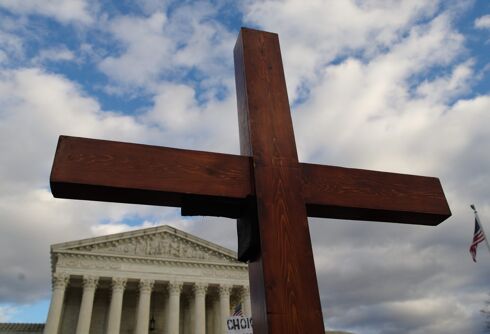FORT MEADE, Md. — Pfc. Bradley Manning’s private struggle with his gender identity in a hostile workplace put incredible pressure on the soldier who leaked classified information to WikiLeaks, an Army psychologist said Wednesday.
Manning eventually came out to Capt. Michael Worsley and emailed the therapist a photo of himself dressed as a woman, wearing a blonde wig and lipstick. The photo was attached to a letter titled “My problem,” in which Manning describes his problems with gender identity and his hope that a military career would “get rid of it.”

Worsley testified at Manning’s sentencing hearing at Fort Meade, near Baltimore. He said the soldier had little to no support base.
“You put him in that kind of hyper-masculine environment, if you will, with little support and few coping skills, the pressure would have been difficult to say the least,” Worsley said. “It would have been incredible.”
Never Miss a Beat
Subscribe to our newsletter to stay ahead of the latest LGBTQ+ political news and insights.
Manning faces up 90 years in prison for leaking classified information to WikiLeaks while working as an intelligence analyst in Iraq in 2010.
He sat and listened attentively to the psychologist who had treated him, smiling occasionally. But his face tightened when Worsley talked about how guarded and hesitant Manning had been in Iraq to talk about his gender identity.
Worsley’s testimony described some military leaders as lax at best and obstructionist at worst when it came to tending to troop mental health.
He said some in Manning’s brigade “had difficulty understanding” recommendations the doctor would make regarding the needs of some soldiers.
“I questioned why they would want to leave somebody in a position with the issue they had,” Worsley said of troubled soldiers.
Article continues below
The soldier was set to take the stand in his own defense later Wednesday. His sister and aunt are also on the defense witness list.
At least 46 international journalists and 78 spectators were in attendance. Many spectators wore black “truth” t-shirts.
Most reporters watched a closed-circuit feed of the hearing in a nearby building. Other closed-circuit feeds were available to overflow spectators in a trailer outside the courthouse and another nearby building.
Security was tight. Barricades surrounded the courthouse, and those entering the courtroom or any of the viewing areas were scanned for metal objects and had their belongings meticulously searched.
This material may not be published, broadcast, rewritten, or redistributed.













